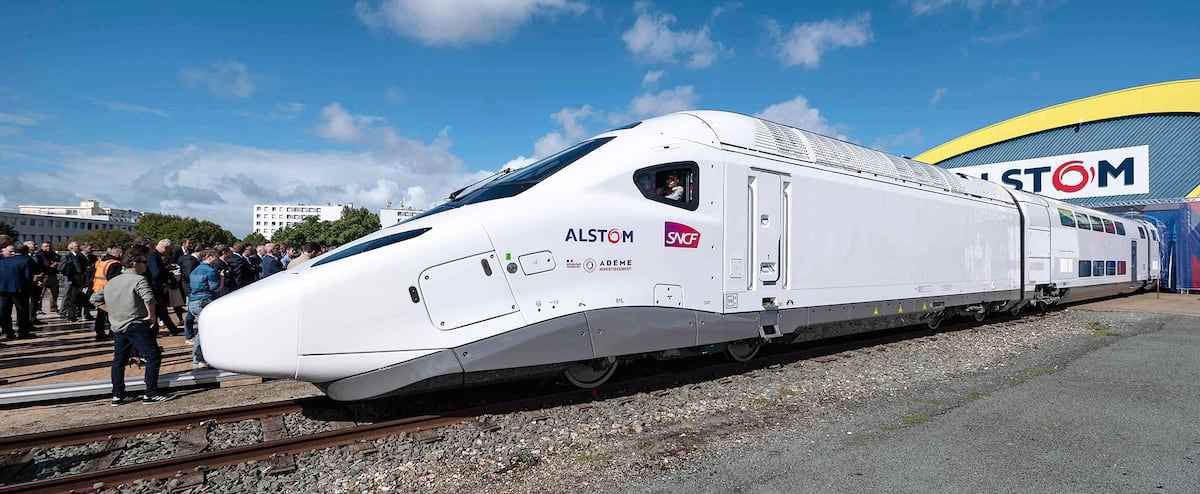More profitable, better for the environment: the Trudeau government should put aside its high-frequency train project (TGF) between Quebec and Toronto to focus on high speed, insists the French giant Alstom.
“As long as you put sums like these, as much as is in the most profitable investment possible and which brings the impact both economic and societal the highest”, confides to the Log Michael Keroullé, President of Alstom for the Americas.
Mr. Keroullé argues that a high-speed train costs 20 to 30% more than a slower version. It is possibly more. But in the end, the investment is more profitable because more people are using it, he argues.
“We see it in all the countries that have made this choice: with speed, we shift the mode of transport [de l’auto et de l’avion vers le train] much more than what was initially envisaged”, affirms the leader.
Alstom, of which the Caisse de depot is the largest shareholder with a 17.5% stake, is making the exit because it said it felt last fall that Ottawa was “opening” to the idea of finance a train that would have a maximum speed of 300 km/h.
In March 2022, in its “request for expressions of interest” for the project, Transport Canada mentioned a maximum speed of 200 km/h, which is barely more than the maximum speed of current VIA Rail trains.
About fifty companies responded to the government’s call, including several who expressed their desire to go beyond 200 km/h.
Result: In October, the government published an update in which it promises to give “flexibility” to companies to offer “higher speeds on certain segments”.
Aim for less than three hours
According to Alstom, the objective should be to cut the travel time between Toronto and Montreal from five hours to less than three hours.
“There, the benefit of the train becomes obvious,” says Michael Keroullé. This is what happened on all lines in all the countries in which we had this same debate. »
Joined by The newspaperthe cabinet of the federal Minister of Transport, Omar Alghabra, did not want to comment on the possibility that the TGF project will be transformed into a TGV.
In the spring of 2021, The newspaper reported tensions within the federal government between supporters of the two scenarios. According to our sources, Michael Sabia, Deputy Minister of Finance, and Catherine McKenna, then Minister of Infrastructure, were campaigning for a TGV between Montreal and Toronto which would have set Quebec aside.
In December, Mr. Alghabra announced the creation of a subsidiary of VIA Rail to manage the TGF project. A former Hydro-Québec executive, Marie-José Nadeau, has been named vice-chairman of the entity’s board of directors.
In May, Cynthia Garneau caused a surprise by resigning from her position as CEO of VIA after three years in office.
Alstom in Canada
- Headquarters Americas: Saint-Bruno-de-Montarville
- Plants: Thunder Bay, La Pocatière,
- Brampton, Kingston, St. Bruno
- Employees: 4200
VIA union fears privatization
The official documents are clear: the federal government plans to entrust not only the construction of the high frequency train (TGF) to the private sector, but also its operation, once it is completed, which worries the union members of VIA Rail.
In a request for expressions of interest published last year, Ottawa specified that a “private partner” would be responsible for both the construction and operation of the future rail network, for a period of ” 30 to 50 years old.
Even less service?
“We are concerned because one of the only truly profitable lines at VIA Rail is the Quebec City-Windsor corridor. So, if we privatize that section, well obviously that means that the profits will go with the line. However, this is what allows VIA to maintain trains in other regions,” said Daniel Cloutier, Quebec director of Unifor, which represents more than 2,000 VIA employees.
“Would that mean fewer trains elsewhere or more public funding to offset the profits that would be transferred to private enterprise? continues Mr. Cloutier.
“Once the train is built and running, there’s no reason VIA Rail can’t operate it the way it does now,” he says.
It should be noted that it is this form of public-private partnership that the Caisse de dépôt has chosen for the operation of the Metropolitan Express Network (REM), in the Montreal region.
